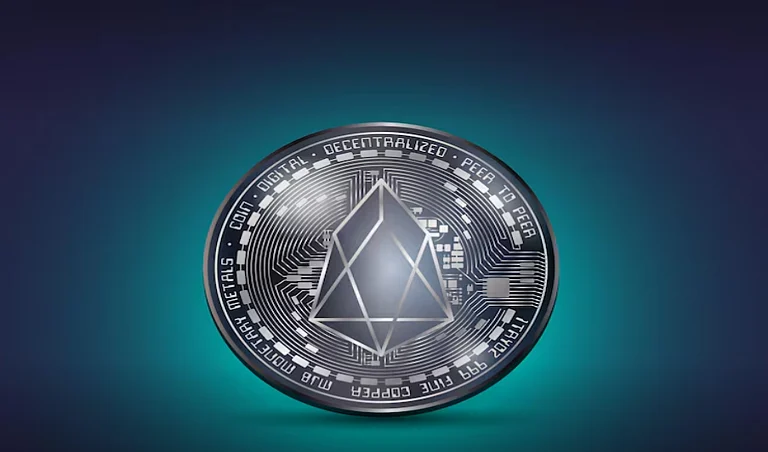When Ethereum launched in 2015, it revolutionized the blockchain space by suggesting smart contracts and decentralized applications (dApps). This transformed blockchains from transactional ledgers to programmable, multi-purpose systems. But with usage came problems — network congestion, high gas fees, and low scalability.
To combat these headaches, new Layer 1 (L1) blockchains emerged — each offering unique solutions for speed, cost, and interoperability. Meanwhile, Ethereum has been evolving with Layer 2 (L2) rollups and Rollup-as-a-Service (RaaS) platforms, allowing developers to deploy scalable, modular rollups with ease.
In this article, we’ll explore how Ethereum compares with other Layer 1 blockchains, and how Rollup-as-a-Service (RaaS) is becoming a key enabler in the next phase of blockchain evolution.
Understanding Layer 1: The Foundation of Blockchain Ecosystems
Layer 1 blockchains make up the underlying infrastructure of the decentralized system. They hold the main ledger, execute transactions, and offer network security through the assistance of consensus algorithms such as Proof of Work (PoW) or Proof of Stake (PoS).
Key functions of Layer 1:
Consensus management
Validation of transactions
Execution of smart contracts
Token issuance and management
Examples of popular Layer 1 blockchains:
Ethereum – Creator of smart contracts and DeFi platforms
Solana – High scalability and fast confirmation time
Cardano – Research-based and sustainable orientation
Avalanche – Very scalable and interoperable with subnets
Polkadot – Interoperable to support many chains
Ethereum: Advantages, Disadvantages, and Upgrades
Ethereum remains the largest Layer 1 by developer community, ecosystem maturity, and TVL. Ethereum 2.0 upgrade (transitioning from PoW to PoS) significantly improved energy efficiency and prepared the ground for future scalability solutions.
The key strengths of Ethereum:
Huge developer community
Strong DeFi and NFT ecosystem
Reliable and war-proven infrastructure
EVM multi-chain compatibility
Where Ethereum struggles:
Congested gas fees during peak demand
Lower rate of transaction velocity compared to new entrants
Scalability limitations on the base chain
To mitigate these, Ethereum's roadmap gives priority to Layer 2 scaling and Rollup-as-a-Service (RaaS) solutions to distribute workload and increase efficiency.
The Emergence of Other Layer 1 Blockchains
Ethereum floundered on scalability while other L1 blockchains stepped up with faster and cheaper solutions. They are:
Solana: Supports over 65,000 TPS at low fees, ideal for high-frequency trading and gaming.
Avalanche: Utilizes subnets for modularity-based scalability.
Cardano: Emphasizes peer-reviewed innovation and multi-layered architecture.
Polkadot: Facilitates multi-chain interconnection using parachains.
Each L1 chain attempts to resolve the blockchain trilemma — scalability, security, and decentralization — in its own way.
Comparison: Ethereum vs Other Layer 1 Blockchains
Feature | Ethereum | Solana | Avalanche | Cardano | Polkadot | |
Consensus Mechanism | Proof of Stake (PoS) | Proof of History + PoS | Avalanche Consensus | Ouroboros PoS | Nominated PoS | |
Transactions per Second | ~30 TPS (base layer) | ~65000 TPS | ~4500 TPS | ~250 TPS | ~1000 TPS | |
Average Fees | High | Very low | Low | Low | Low | |
Ecosystem Maturity | Very High | Medium | Medium | Medium | Medium | |
Ecosystem Maturity | Yes (EVM-based) | Yes | Yes (EVM-compatible) | Yes (EVM-compatible) | Yes | Yes |
Yes (EVM-compatible) | ||||||
Developer Community | Largest in Web3 | Growing | Strong and expanding | Moderate | Active and diverse |
Rollup-as-a-Service (RaaS): The Next Big Shift
As blockchain complexity increases, Rollup-as-a-Service (RaaS) has emerged as the next big shift in terms of scalability and customization. Rollups process transactions off-chain and provide proofs to Layer 1 periodically, scaling throughputs tremendously and reducing gas prices.
What is Rollup-as-a-Service (RaaS)?
Rollup-as-a-Service (RaaS) provides a platform or infrastructure to developers where they can easily build, deploy, and maintain rollups without requiring extensive knowledge in cryptography or node management. It is a de facto "no-code" or "low-code" solution for blockchain scalability.
Benefits of Rollup-as-a-Service (RaaS):
Simplifies deployment and creation of rollups
Reduces development time and cost
Enhances transaction throughput
Provides Ethereum-level security
Offers dApp and enterprise customization
RaaS providers such as Celestia, AltLayer, and Caldera are enabling developers to deploy application-specific rollups that are fully interoperable with Ethereum and other ecosystems.
How RaaS Secures Ethereum and Other Layer 1s
Scalability, Ethereum's biggest bottleneck — is being addressed with modular rollup technologies. With Rollup-as-a-Service (RaaS), projects are able to create custom rollups for specific applications like gaming, DeFi, or social apps.
Key advantages for Layer 1 ecosystems
Scalability: Tunes transactions off the main chain.
Interoperability: Integrates L1s and L2s in a seamless fashion.
Customization: Supports separate environments for individual applications.
Ecosystem expansion: Entices new developers and projects.
Even competing Layer 1s are adopting RaaS solutions to enhance cross-chain interaction and scalability. For instance, Avalanche subnets and Polkadot parachains follow analogous modular design principles.
Future Outlook: Modular Blockchains and Beyond
The blockchain ecosystem is rapidly moving from monolithic to modular architectures. In this paradigm:
Layer 1 handles settlement and security.
Layer 2 and RaaS handle scalability and execution.
This shift allows Ethereum and other Layer 1s to focus on their strengths and leave scalability to programmable rollup infrastructures.
In the coming years:
Expect banking-, gaming-, and identity-grade RaaS platforms.
Rollup-as-a-Service (RaaS) backed cross-chain interoperability will reach the mainstream.
Ethereum will remain dominant — no longer a monopoly, but in a multi-chain modular world.
Key Takeaways
Ethereum remains the leading Layer 1, but challenged by Solana, Avalanche, etc.
Scalability headaches are being tackled with Layer 2 rollups and Rollup-as-a-Service (RaaS).
RaaS enables quick, customized, and inexpensive rollup deployment.
Modular design of blockchains is the future — optimal Layer 1 security with Layer 2 scalability.
FAQs
1. What is a Layer 1 blockchain?
A Layer 1 blockchain is the foundational network (e.g., Ethereum, Solana, or Cardano) that processes transactions, validates blocks, and protects the network independently without reliance on external layers.
2. What does Rollup-as-a-Service (RaaS) solve?
RaaS simplifies rollup creation and deployment, enabling developers to scale dApps affordably without requiring deep blockchain infrastructure knowledge.
3. Is Rollup-as-a-Service (RaaS) Ethereum-specific?
No. While RaaS is currently most common on the Ethereum chain, other Layer 1 blockchains are incorporating similar modular scaling technology.
4. In what way does RaaS increase scalability?
It transacts off-chain and posts proofs on Layer 1, reducing congestion and gas prices but maintaining security.
5. Will Ethereum's dominance be lost to other Layer 1s?
Unlikely. Ethereum's modularity and RaaS enableability will position it at the center of the evolving blockchain landscape.

























